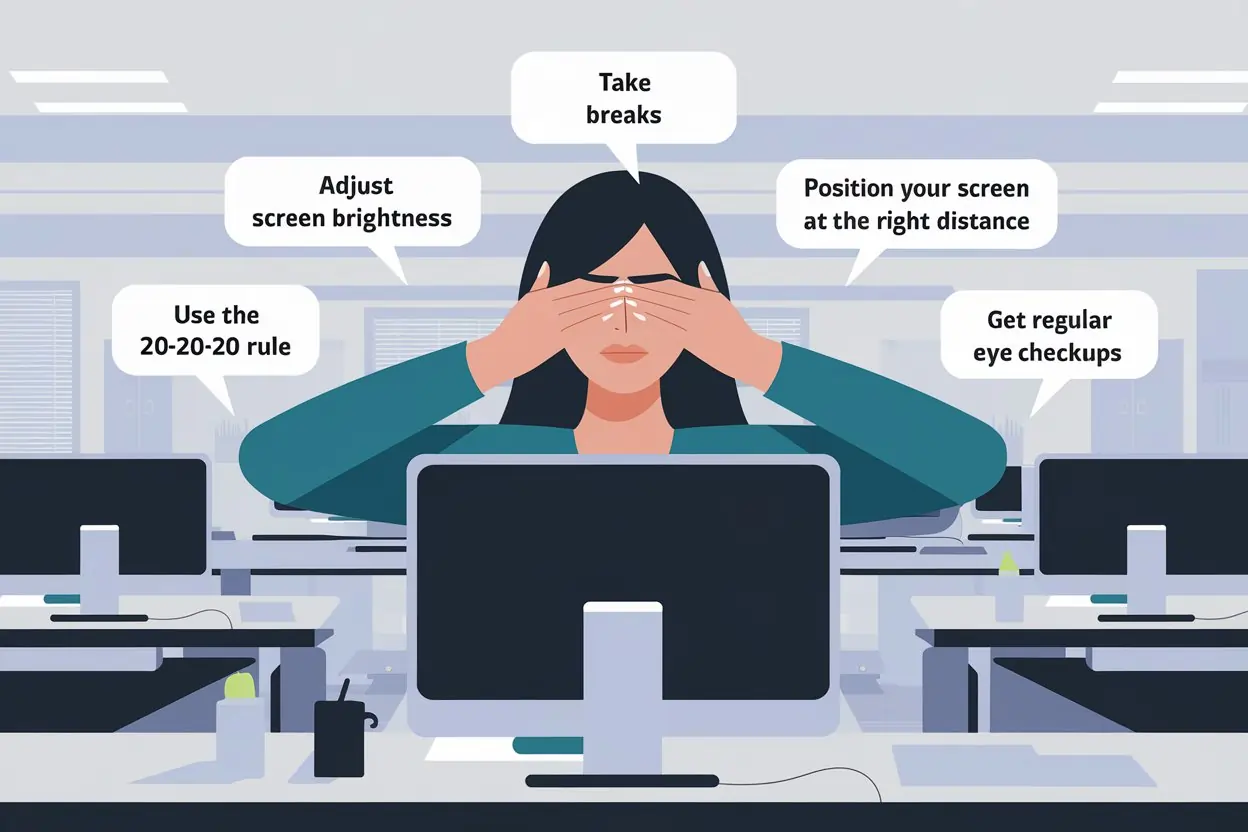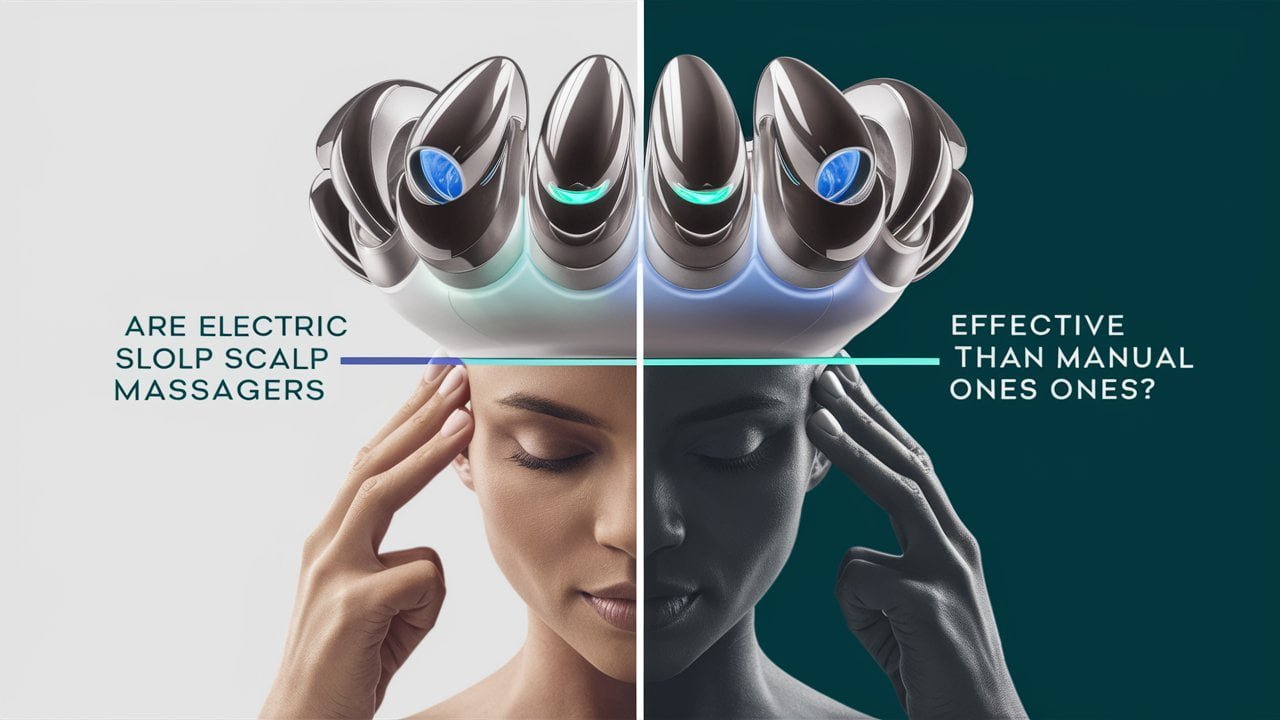Tips to Protect The Eye in the Digital Age
We live in a digital world. Almost everything involves staring at a screen. Whether working on a computer, scrolling

We live in a digital world. Almost everything involves staring at a screen. Whether working on a computer, scrolling on a phone or binge-watching shows, our eyes are constantly exposed to digital screens.
This brings us to a common issue: digital eyestrain. It’s more prevalent than ever, and understanding it is the first step in protecting our eyes.
Understanding Digital Eyestrain
Digital eyestrain, or computer vision syndrome, refers to various eye and vision-related problems that result from prolonged screen use. Phones, tablets and even e-readers contribute to it.
So, why does it happen? Our eyes weren’t made for long periods of close-up activities. They’re meant to scan distant horizons, not focusing intensely on small text and images for hours.
We tend to blink less often when we use screens, so our eyes don’t get the moisture they need. The blue light emitted from screens also plays a part. This blue light can penetrate the eyes and can potentially damage the retina.
Common Symptoms Of Digital Eyestrain
Digital eyestrain is pretty easy to spot. Here are some common symptoms:
- Dry Eyes: Staring at screens reduces the blink rate, leading to dryness. This lack of moisture can cause irritation and redness, making your eyes feel gritty.
- Blurry Vision: Focusing on screens for too long can make it hard to focus on distant objects. This temporary blurriness occurs because the eyes struggle to adjust between different distances.
- Headaches: Eye strain often leads to frequent headaches. These mild or severe headaches are usually concentrated around the forehead and temples.
- Neck and Shoulder Pain: Poor posture while using screens can cause discomfort. Hunching over devices can strain the neck and shoulders, leading to persistent pain and tension.
- Eye Fatigue: After long periods of screen use, the eyes feel tired or sore. This fatigue can make it challenging to keep the eyes open and focused, impacting productivity and comfort.
How to Protect Your Eyes from Digital Screens
1. Follow the 20-20-20 Rule:
Consider taking a 20-second break to look at something 20 feet away every 20 minutes. This simple practice can help minimise eye strain by relaxing and refocusing. It’s an easy habit to form and can make a big difference in how your eyes feel by the end of the day. Set a timer to remind yourself until it becomes second nature.
2. Adjust Screen Brightness:
Make sure your screen isn’t too bright or too dim. Match the screen brightness with the lighting around you. A bright screen can cause glare and strain, while one that is too dim can make your eyes work harder to see clearly. Adjust the settings on your device to find a comfortable balance that reduces strain and improves visibility.
3. Maintain Proper Distance:
Keep screens at arm’s length (about 25 inches) away from your eyes. Position the screen so that your eyes are level with the top of the screen. This distance helps reduce strain and encourages a more natural position for your head and neck. Adjust your chair or monitor height to maintain this ergonomic setup and prevent discomfort.
4. Use the Right Lighting:
Avoid using screens in dark rooms. The difference between the bright screen and dark surroundings can strain the eyes. Ideally, use screens in well-lit rooms with ambient light similar to your screen brightness. Position light sources to minimise glare and reflections on your screen, which can also contribute to eye strain.
5. Blue Light Filters:
Use blue light-blocking glasses or apply screen filters. Many devices also have a night mode that reduces blue light emission. Blue light can meddle with your sleep patterns and contribute to eye strain. Using these filters can minimise exposure significantly during evening hours, help protect your eyes and improve sleep quality.
6. Blink Often:
Blink more frequently to prevent dry eyes from prolonged screen time. Remind yourself to blink regularly, especially during long sessions of screen use. You can also use the 20-20-20 rule to remind yourself to blink and give your eyes a quick refresh.
7. Regular Eye Exams:
Visit an eye specialist regularly to ensure your eyes are in good health. They can provide personalised advice and catch any issues early. Regular check-ups can help detect vision problems and eye diseases that may not be noticeable. Your doctor can also recommend specific strategies or tools to help reduce digital eye strain based on your needs.
8. Proper Posture:
Sit up straight and adjust your screen to avoid slouching. Use a chair that supports your back. Good posture reduces strain on your neck, shoulders and back, which can indirectly affect your eye comfort. Adjust your screen at eye level, keep your feet flat on the floor and maintain a neutral posture that minimises the risk of discomfort and strain.
9. Use Eye Drops:
If you experience dry eyes, use artificial tears to keep them lubricated. Prolonged screen use can reduce tear production, leading to dryness and irritation. Over-the-counter eye drops can provide immediate relief and help maintain moisture. Consult your eye doctor for recommendations on the best products and how often to apply them.
10. Limit Screen Time:
Take regular breaks from screens. Try to follow a schedule that includes time away from digital devices. Setting boundaries for screen use can help reduce overall eye strain and promote better eye health. Engage in alternate activities that don’t involve screens, such as reading a book, going for a walk or spending time outdoors, to give your eyes a much-needed rest.
Importance of DSE Training
DSE (Display Screen Equipment) training is a workplace training designed for those who spend much time on computers at work. It educates users about the risks of prolonged screen use and teaches them how to set up their workstations ergonomically.
DSE training covers the importance of taking breaks, adjusting screens and chairs and understanding the impact of lighting. It’s a proactive approach to prevent digital eyestrain and promote overall well-being. Understanding digital eyestrain and taking steps to mitigate its effects can make a significant difference. Remember, taking care of your eyes today can prevent a lot of discomfort in the future. So, give those eyes a break and enjoy a








